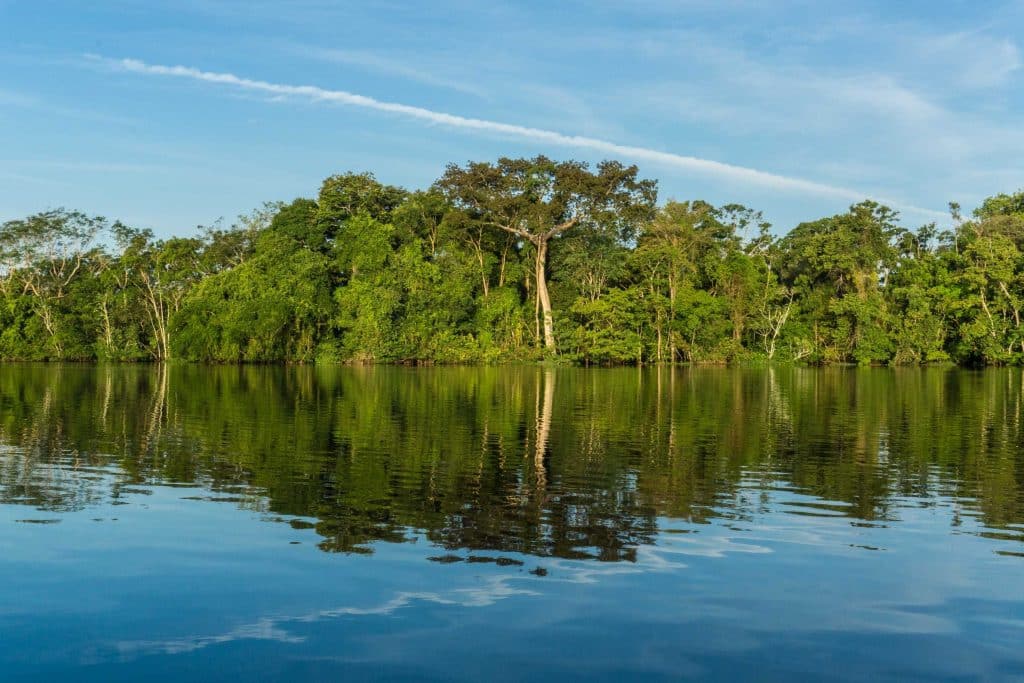Port innovation as a sustainability strategy
For decades, innovation in ports was synonymous with physical expansion: new berths, larger cranes, expanded backlands. But in the 21st century, the concept of innovation is being reinvented. In a world where energy efficiency, information security, traceability, and decarbonization are strategic imperatives, technological transformation in ports is no longer optional. In this new paradigm, companies […]
- 09/10/2025
- 6 minutes

For decades, innovation in ports was synonymous with physical expansion: new berths, larger cranes, expanded backlands. But in the 21st century, the concept of innovation is being reinvented.
In a world where energy efficiency, information security, traceability, and decarbonization are strategic imperatives, technological transformation in ports is no longer optional.
In this new paradigm, companies like Wilson Sons have been proving that it is possible to align productivity and positive environmental impact through applied innovation. From generative artificial intelligence to gate automation, and from digital platforms to open innovation hubs, the company has repositioned its port and maritime assets as intelligent, connected, and responsible ecosystems.
This article explores how innovation is shaping the future of port logistics, supported by data, trends, and real-world case studies — a technical and strategic dive into the new value cycle of sustainable port infrastructure.
Enjoy the read!
The New Role of Innovation in Logistics Infrastructure
Traditionally, innovation in the port sector was seen as incremental — operational improvements, equipment replacement, and layout adjustments. But with the rise of digital technologies, growing environmental demands, and the pressure for transparency across logistics chains, innovation has become a continuous, cross-functional, and highly strategic process.
Innovation is no longer confined to a department — it becomes a driver that permeates the entire organization: from maintenance engineering to ESG governance, from customer relations to people management. And its goal is not only to reduce costs or increase productivity, but to create shared value for communities, clients, shareholders, and the environment.
“The ports of the future will be those that combine performance, data intelligence, and environmental responsibility. Innovation is the link that connects these three pillars.”
Simone Prado
Innovation and Digital Transformation Manager
Applied Innovation: The Wilson Sons Case
At Wilson Sons, innovation is managed in a structured way — supported by specialized hubs, partnerships with startups, and full-scale implementation of projects.
In 2023, several innovative solutions were deployed across the company’s terminals, delivering tangible results in safety, efficiency, and sustainability. Below are some highlights of this transformation.
Artemis Onboard: Embedded Intelligence on Tugboats
One of the most significant recent advances is the Artemis Onboard system — a digital platform installed on Wilson Sons’ tugboats that enables real-time monitoring of operational and environmental variables, such as:
- Fuel consumption
- Engine performance
- Navigation conditions
- Efficiency by maneuver type
Using this data, algorithms guide captains to perform maneuvers with lower fuel use and CO2 emissions — without compromising safety.
The impact is direct: reduced emissions, greater energy efficiency, and improved cost predictability. The technology also enables predictive maintenance, reducing unplanned downtime and extending equipment lifespan.
“This kind of onboard intelligence positions tugboats as high-performance environmental assets, aligning port service delivery with the global maritime sector’s decarbonization goals.”
Marcio Castro
Executive Director, Tugboat Division
Gate Digitalization: Flow and Control with Lower Impact
At Wilson Sons’ container terminals, digitalization begins at the gate. OCR (Optical Character Recognition) systems automatically identify truck and container plates, reducing waiting times and error risks.
The digital gate system integrates with scheduling tools and WS Connect — the company’s platform that provides real-time operational data. This enables transporters, brokers, and shippers to better plan their deliveries and pickups, minimizing queues, congestion, and unnecessary emissions.
Both in Salvador and Rio Grande, gate automation has already resulted in:
- Over 30% reduction in average access time
- Lower vehicle fuel consumption
- Increased physical and asset security
- Greater transparency in operational window management
WS Connect: Logistics Intelligence at Your Fingertips
Another highlight is the WS Connect platform, which integrates operational data from terminals, tugboats, and customs services into a single digital environment accessible to clients.
The platform allows users to:
- Track their cargo in real time
- Monitor vessel maneuvers
- Access documents and clearance statuses
- Communicate directly with Wilson Sons teams through digital channels
Beyond increasing transparency and trust, WS Connect reduces the need for physical visits, phone calls, and rework — which translates into lower resource consumption, reduced carbon emissions, and faster logistics flows.
Positive Environmental Impact: Innovation That Reduces the Ecological Footprint
These innovations are not just tools for efficiency — they generate measurable environmental benefits.
In 2023, through technology adoption and operational modernization, Wilson Sons reduced its absolute Scope 1 and 2 emissions by 4% and increased the share of renewable sources in its energy matrix to 53%.
Additionally, the data generated by digital platforms enables the auditing of environmental impacts, validation of sustainability gains, and improved compliance with customer and certification requirements.
Innovation Culture: The Invisible Asset Driving Transformation
No technology operates in isolation. Wilson Sons’ innovation culture is a quiet but powerful competitive advantage. The company fosters experimentation, empowers its teams, rewards internal ideas, and maintains open channels for operational suggestions.
Programs like Be Digital and Wilson Sons University help develop teams that are better prepared to engage with technology, collaborate with startups, and integrate ESG principles into their daily work.
This culture translates into the speed of adoption of new solutions, employee motivation, and the consistency of results achieved. With embedded intelligence, process automation, digitalization, and open innovation, Wilson Sons has repositioned its assets as sustainable, technological, and resilient hubs.
The future of logistics dependes on cleaner, more connected, and more integrated operations. And the ports that see this movement as a lever for shared value creation will not only be ready to compete – they will be ready to lead.
Simone Prado
Innovation and Digital Transformation Manager





